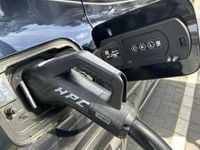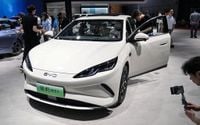The Netherlands is gearing up for significant changes in its vehicle tax structure, particularly aimed at making electric vehicles (EVs) more financially appealing. Starting next year, the discount for plug-in cars will increase to 30 percent, a slight adjustment from the previously set 25 percent. This change is part of a broader strategy to encourage the adoption of electric vehicles as the country aims for a 55 percent reduction in greenhouse gas emissions by 2030.
Currently, electric drivers enjoy a substantial 75 percent discount on vehicle tax, but this will be reduced to 30 percent in 2026. The shift in tax structure is being introduced to ensure that electric vehicles remain attractive to consumers, especially as the weight of these vehicles—often heavier due to their battery packs—has traditionally placed them at a disadvantage under the existing tax system.
Minister Hermans, responsible for Climate and Green Growth, emphasized the importance of this reform in a recent cabinet meeting. The current system bases vehicle tax primarily on weight, which disproportionately affects electric vehicles. As a result, the government is considering a new calculation method that will instead focus on the surface area of the vehicles. This proposed change aims to alleviate the financial burden on electric vehicle owners while encouraging consumers to choose smaller, more efficient cars.
For instance, under the current weight-based system, a Peugeot e-208 with a 54 kWh battery weighs 1,430 kg, while a conventional Peugeot 208 with a 1.2 PureTech engine weighs only 1,008 kg. The heavier electric vehicle faces higher taxes, which the government seeks to rectify through the new surface area approach. This method would allow smaller, more efficient vehicles to benefit from lower taxes, regardless of their weight.
The cabinet's proposal also includes a long-term strategy for the CO2 levy imposed on industrial companies, which will remain unchanged until 2030. Minister Hermans described this levy as a crucial incentive for businesses to reduce their carbon emissions. However, she has indicated that companies will be given more time to adapt to these regulations, with discussions planned on how the levy will evolve post-2030.
Moreover, the government is temporarily suspending the plastic tax, which was designed to encourage the use of recycled materials. The suspension comes as manufacturers struggle to meet recycling standards due to insufficient supply. Hermans is expected to engage with industry leaders to establish a new recycling norm that aligns with sustainability goals.
In addition to the vehicle tax reforms, the government is allocating 2.1 billion euros towards hydrogen production as an alternative energy source. More than 600 million euros will also be directed towards subsidies to stimulate hydrogen demand, alongside funding for the underground storage of CO2 as part of carbon capture and storage (CCS) initiatives. A final decision on the CCS project, known as Aramis, is expected in 2026, with plans to begin underground CO2 storage by 2030.
As the Dutch government pushes for a greener future, these changes reflect a commitment to making electric vehicles more accessible and appealing to the public. The proposed modifications to the vehicle tax system aim to support the transition towards an electrified automotive landscape, ensuring that EVs are not penalized for their weight while promoting environmental sustainability.
With these reforms, the Dutch government hopes to foster a more favorable environment for electric vehicles, ultimately leading to a significant reduction in greenhouse gas emissions. As the nation moves closer to its 2030 targets, the emphasis on electric vehicles and sustainable practices will play a critical role in shaping the future of transportation in the Netherlands.






